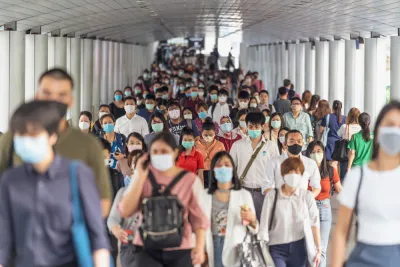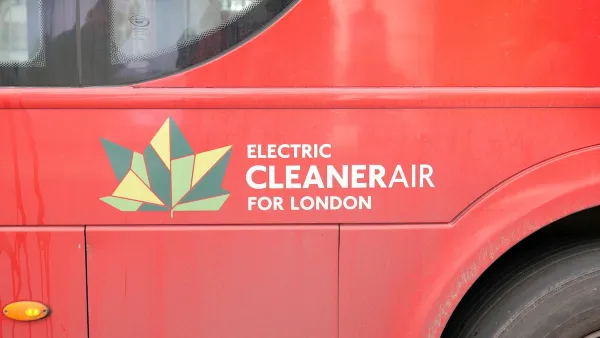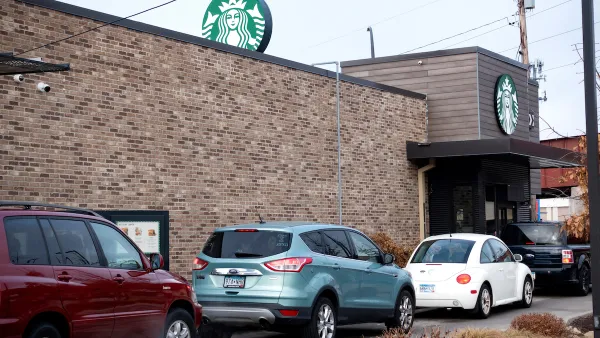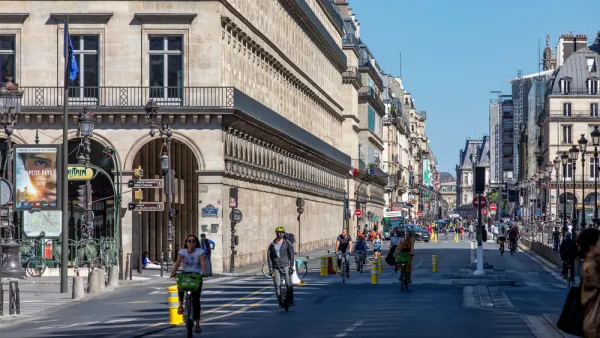As economies begin to reopen around the world, some cities are taking action to prevent widespread gridlock.

"As coronavirus lockdowns loosen around the world, city leaders are scrambling to address a new problem: the prospect of gridlock worse than before the pandemic," write Somini Sengupta and Brad Plumer. "From Shenzhen to Milan to Austin, officials are trying to coax people back onto buses and subways and reclaim road space for cyclists and pedestrians."
The consequences of fewer people riding transit or riding bikes will be bad for congestion, pollution, and injuries and fatalities caused by collisions, according to the article. But many cities are struggling to mitigate the oncoming traffic.
More than 30 large cities coming out of lockdown, including Hong Kong, Shenzhen, Oslo and Geneva, recorded more congestion on their roads in mid-June compared with the same period last year, according to data from TomTom, a navigation company. Other early evidence suggests that driving is increasing faster than public transit use as people step out of confinement and move around again.
The article surveys the globes for some of the transportation planning responses to the growth in automobile travel as public transit struggles, including the examples of Bogotá, London, Seoul, Beijing, and Austin. Here are the details on Austin's efforts:
In Austin, Tex., the city has expanded its system of public shuttles that can be reserved through a mobile app by riders who aren’t well served by existing bus lines. Officials are also drawing up plans to better integrate existing bus and rail lines with the city’s bike-share system by offering unified ticketing and apps. They also plan to eventually replace the city’s 1,000 shared bikes with electric versions that make travel easier in the sweltering Texas heat.
FULL STORY: Lockdowns Tamed Road Traffic. Here’s How Cities Aim to Keep It Down.

National Parks Layoffs Will Cause Communities to Lose Billions
Thousands of essential park workers were laid off this week, just before the busy spring break season.

Retro-silient?: America’s First “Eco-burb,” The Woodlands Turns 50
A master-planned community north of Houston offers lessons on green infrastructure and resilient design, but falls short of its founder’s lofty affordability and walkability goals.

Delivering for America Plan Will Downgrade Mail Service in at Least 49.5 Percent of Zip Codes
Republican and Democrat lawmakers criticize the plan for its disproportionate negative impact on rural communities.

Test News Post 1
This is a summary

Test News Headline 46
Test for the image on the front page.

Balancing Bombs and Butterflies: How the National Guard Protects a Rare Species
The National Guard at Fort Indiantown Gap uses GIS technology and land management strategies to balance military training with conservation efforts, ensuring the survival of the rare eastern regal fritillary butterfly.
Urban Design for Planners 1: Software Tools
This six-course series explores essential urban design concepts using open source software and equips planners with the tools they need to participate fully in the urban design process.
Planning for Universal Design
Learn the tools for implementing Universal Design in planning regulations.
EMC Planning Group, Inc.
Planetizen
Planetizen
Mpact (formerly Rail~Volution)
Great Falls Development Authority, Inc.
HUDs Office of Policy Development and Research
NYU Wagner Graduate School of Public Service





























